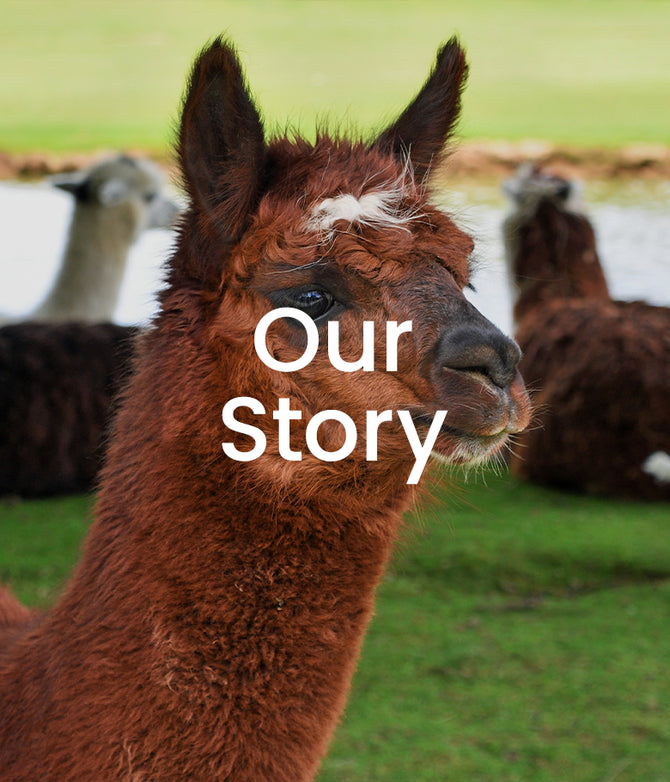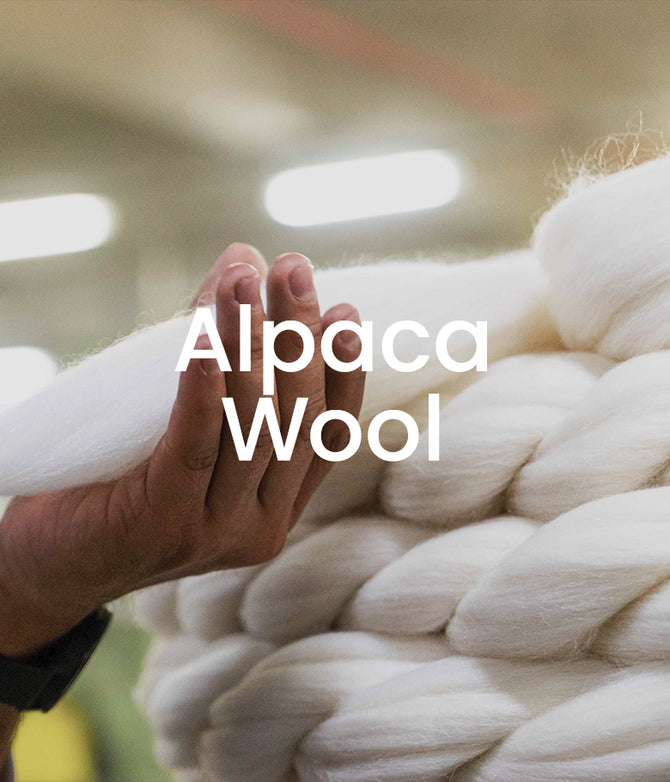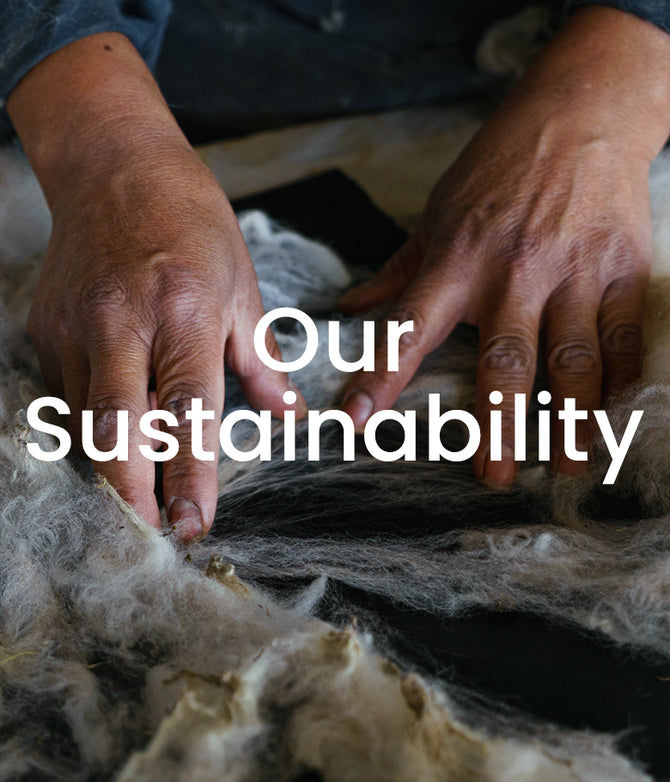THE SUPERIOR FIBER
Published Nov 24, 2018 | Updated August 30, 2020
Alpaca wool has long been used in the Andes for clothing and ornamental textiles. Llamas coexisted with alpacas, but the Inca and Andean civilizations that predated them tended to use alpaca wool for high quality clothing instead of llama wool. That leads to the question:
WHY ALPACA?
Alpaca Origins
Alpacas are camelids native to the Andes. They are related to the camels of Africa through a lineage, that started in North America and split sometime in the last 40 million years. While the camel’s ancestors headed east, another tribe – the Lamini – headed south. Much later, this tribe split further to the Vicugna and Lama tribes, which gave us Vicuñas and Guanacos, the direct ancestors of alpacas (Vicugna pacos) and Llamas (Lama glama).
The llama is the domesticated version of the guanaco and evidence indicates they were domesticated 1,000 or so years ago. Guanacos were much bigger than vicuñas, so llamas – bigger still – became the only pack animal available to the cultures like the Inca. Llama wool was also used for clothing and textiles and their meat as a source of protein. The Inca developed a method of drying the meat with salt for storage and the product was known as ch’arkui in Quechua (the language of the Inca). If that sounds familiar, it’s thought that the word “jerky” was derived from the Quechua word!


On the other hand, vicuñas had soft, silky fleeces, but produce very little wool (around 1.1lb (0.5kg) per year) and didn’t take well to domestication. These days, due to the fineness of the wool, the relative scarcity of the animal and the small amount of wool they produce, vicuña is one of the most expensive fibers in the world! The alpaca is the vicuña’s domesticated cousin, bred mainly for its wool, although Andean cultures don’t shy away from eating the meat too. Bigger than the vicuña, the alpaca gives a greater yield of wool. While it’s not quite as fine as the vicuña fiber, alpaca wool – particularly the baby and royal varieties – is soft, strong and super warm.


Wool of the Andes
Alapca wool is a superior functional fiber with many incredible benefits, making it perfect for outdoor adventures, snow sports and even traveling.

REGULATES TEMP.
Balances your body's temperature in extreme climates

QUICK-DRYING
High moisture wicking & the lowest moisture absorption

SUPER SOFT
The softest fibers next-to-skin for the most breathability

STAY FRESH
Naturally anti-bacterial & odor-resistant for hygiene
So why is alpaca wool so great? Alpacas generally live above 11,500ft.a.s.l. (3,500m.a.s.l.) and can roam up to 15,750ft.a.s.l. (4,800m.a.s.l.). At those elevations, weather conditions can be harsh and extreme: strong sunshine with a high UV index, blustery winds, rain, hail and snow, sometimes all in one day! During the day, temperatures can reach the mid-60s Fahrenheit, but the they can drop well below freezing overnight. Over the years, alpacas developed a superior quality fleece to withstand these harsh conditions.
Read more about the incredible properties of Alpaca wool here.

Did You Know?
- Alpaca wool comes in 22 natural colors, from white to brown and even black, although black alpacas are pretty rare.
- Alpacas have padded feet rather than hooves, so are gentle on fragile mountainside soils.
- Members of alpaca herds poop in the same place to protect water and food supplies.
- You can eat alpaca meat and it is considered something of a delicacy in Peru.
- Alpaca dung is a great fertilizer and is even used as fuel for cooking high in the Andes, where firewood is scarce.
- There are two species of alpaca: Huacaya and Suri. Huacaya are the fluffy ones and generally used for the high quality fiber; Suri alpacas look like they have dreadlocks!
- Llamas and Alpacas can interbreed and the resulting animal is known as a huarizo, but these hybrids are sterile.
READ MORE ABOUT ALPACA























Great Blog! I have always found informative details about alpaca wool clothing. Great work! You can also find some amazing content about alpaca wool clothing on http://thebestofperu.net